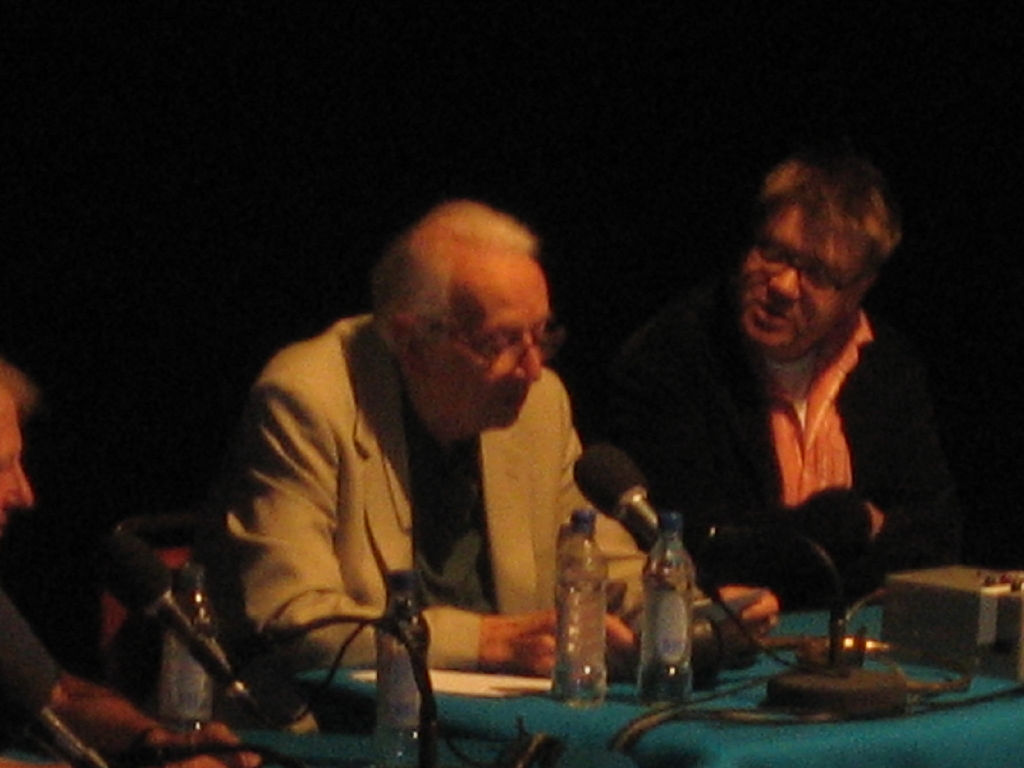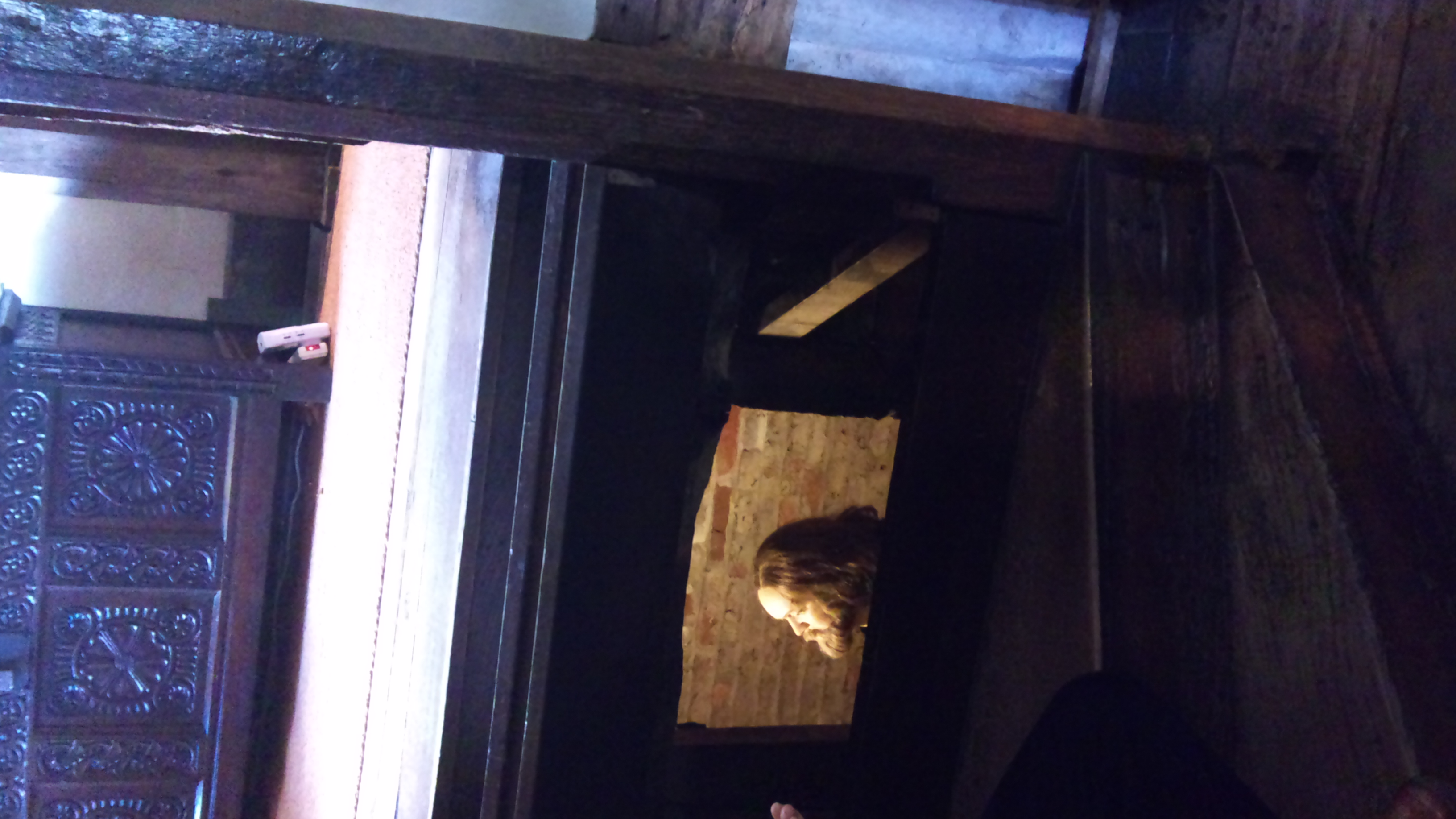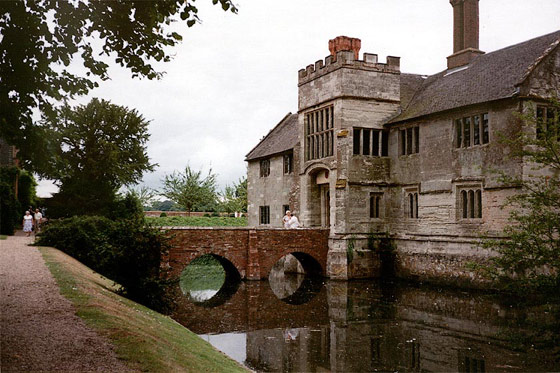|
Humphrey Littleton
Humphrey Littleton, or Humphrey Lyttelton, died on 7 April 1606 at Red Hill outside Worcester. A member of the Lyttelton family, he was executed for his involvement in the Gunpowder plot. Robert Wintour and Stephen Littleton who had escaped from the fight at Holbeche House were captured at Hagley Park on 9 January 1606 despite Littleton's protests that he was not harbouring anyone. It was Littleton who told the authorities that Edward Oldcorne was hiding at Hindlip Hall after he had given him mass. Wintour, Oldcorne, and both Littletons were all executed. Biography Littleton was one of the eight sons of Sir John Lyttelton. He was also the brother or cousin of another John Littleton who had been a member of parliament and had died in gaol for his part in the Essex rebellion. John had lost his estates at Hagley, Frankley, Upper Arley and Halesowen. Humphrey came from Frankley. This John left a widow called Muriel or Meriel who lived at Hagley Park, her husband's estates havin ... [...More Info...] [...Related Items...] OR: [Wikipedia] [Google] [Baidu] |
Humphrey Lyttelton
Humphrey Richard Adeane Lyttelton (23 May 1921 – 25 April 2008), also known as Humph, was an English jazz musician and broadcaster from the Lyttelton family. Having taught himself the trumpet at school, Lyttelton became a professional musician, leading his own eight-piece band, which recorded a hit single, "Bad Penny Blues", in 1956. As a broadcaster, he presented BBC Radio 2's ''The Best of Jazz'' for forty years, and hosted the comedy panel game ''I'm Sorry I Haven't a Clue'' on BBC Radio 4, becoming the UK's oldest panel game host. Lyttelton was also a cartoonist, collaborating on the long-running '' Flook'' series in the ''Daily Mail'', and a calligrapher and president of The Society for Italic Handwriting. Early life and career Lyttelton was born at Eton College (then in Buckinghamshire), where his father, George William Lyttelton (second son of the 8th Viscount Cobham), was a house master. (As a male-line descendant of Charles Lyttelton, Lyttelton was in remain ... [...More Info...] [...Related Items...] OR: [Wikipedia] [Google] [Baidu] |
Meriel Littleton
Meriel Lyttelton or Littelton (died 1630) was an English aristocrat with extensive family and court connections. She was a daughter of Sir Thomas Bromley and Elizabeth Fortescue. The MP for Worcestershire Thomas Bromley (died 1641) was her nephew. Essex conspiracy Meriel married John Lyttelton or Littelton of Hagley and Frankley. John Lyttelton was imprisoned after the rebellion of the Earl of Essex. He wrote to Meriel to put his affairs in order and secure the legal deeds and papers in his black box. In another letter he asked her to burn the correspondence in a painted casket. She went to Frankley House to collect some letters in February 1601 but was interrupted by John Washburn of Wichenford, Sheriff of Worcestershire. He found some letters for Charles Danvers, one of the Essex conspirators, in a desk in her closet. John Lyttleton died in the King's Bench Prison. In 1603, at the Union of the Crowns, Meriel Lyttelton travelled north to Doncaster to meet the new king James V ... [...More Info...] [...Related Items...] OR: [Wikipedia] [Google] [Baidu] |
Executed Gunpowder Plotters
Capital punishment, also known as the death penalty, is the state-sanctioned practice of deliberately killing a person as a punishment for an actual or supposed crime, usually following an authorized, rule-governed process to conclude that the person is responsible for violating norms that warrant said punishment. The sentence ordering that an offender is to be punished in such a manner is known as a death sentence, and the act of carrying out the sentence is known as an execution. A prisoner who has been sentenced to death and awaits execution is ''condemned'' and is commonly referred to as being "on death row". Crimes that are punishable by death are known as ''capital crimes'', ''capital offences'', or ''capital felonies'', and vary depending on the jurisdiction, but commonly include serious crimes against the person, such as murder, mass murder, aggravated cases of rape (often including child sexual abuse), terrorism, aircraft hijacking, war crimes, crimes against hu ... [...More Info...] [...Related Items...] OR: [Wikipedia] [Google] [Baidu] |
1606 Deaths
Sixteen or 16 may refer to: *16 (number), the natural number following 15 and preceding 17 *one of the years 16 BC, AD 16, 1916, 2016 Films * '' Pathinaaru'' or ''Sixteen'', a 2010 Tamil film * ''Sixteen'' (1943 film), a 1943 Argentine film directed by Carlos Hugo Christensen * ''Sixteen'' (2013 Indian film), a 2013 Hindi film * ''Sixteen'' (2013 British film), a 2013 British film by director Rob Brown Music *The Sixteen, an English choir * 16 (band), a sludge metal band * Sixteen (Polish band), a Polish band Albums * ''16'' (Robin album), a 2014 album by Robin * 16 (Madhouse album), a 1987 album by Madhouse * ''Sixteen'' (album), a 1983 album by Stacy Lattisaw *''Sixteen'' , a 2005 album by Shook Ones * ''16'', a 2020 album by Wejdene Songs * "16" (Sneaky Sound System song), 2009 * "Sixteen" (Thomas Rhett song), 2017 * "Sixteen" (Ellie Goulding song), 2019 *"16", by Craig David from ''Following My Intuition'', 2016 *"16", by Green Day from ''39/Smooth'', 1990 *"16", ... [...More Info...] [...Related Items...] OR: [Wikipedia] [Google] [Baidu] |
1570s Births
Year 157 ( CLVII) was a common year starting on Friday (link will display the full calendar) of the Julian calendar. At the time, it was known as the Year of the Consulship of Civica and Aquillus (or, less frequently, year 910 ''Ab urbe condita''). The denomination 157 for this year has been used since the early medieval period, when the Anno Domini calendar era became the prevalent method in Europe for naming years. Events By place Roman Empire *A revolt against Roman rule begins in Dacia. Births * Gaius Caesonius Macer Rufinianus, Roman politician (d. 237) * Hua Xin, Chinese official and minister (d. 232) * Liu Yao, Chinese governor and warlord (d. 198) * Xun You Xun You (157–214), courtesy name Gongda, was a statesman who lived during the late Eastern Han dynasty of China and served as an adviser to the warlord Cao Cao. Born in the influential Xun family of Yingchuan Commandery (around present- ..., Chinese official and statesman (d. 214) Deat ... [...More Info...] [...Related Items...] OR: [Wikipedia] [Google] [Baidu] |
John Wintour (Gunpowder Plot)
Robert Wintour (1568 – 30 January 1606) and Thomas Wintour (1571 or 1572 – 31 January 1606), also spelt Winter, were members of the Gunpowder Plot, a failed conspiracy to assassinate King James I. Brothers, they were related to other conspirators, such as their cousin, Robert Catesby, and a half-brother, John Wintour, also joined them following the plot's failure. Thomas was an intelligent and educated man, fluent in several languages and trained as a lawyer, but chose instead to become a soldier, fighting for England in the Low Countries, France, and possibly in Central Europe. By 1600, however, he changed his mind and became a fervent Catholic. On several occasions he travelled to the continent and entreated Spain on behalf of England's oppressed Catholics, and suggested that with Spanish support a Catholic rebellion was likely. As momentum was building behind a peace settlement between the two countries, Thomas's pleas fell on deaf ears. Instead, in 1604 he decided to j ... [...More Info...] [...Related Items...] OR: [Wikipedia] [Google] [Baidu] |
Hanged, Drawn And Quartered
To be hanged, drawn and quartered became a statutory penalty for men convicted of high treason in the Kingdom of England from 1352 under Edward III of England, King Edward III (1327–1377), although similar rituals are recorded during the reign of Henry III of England, King Henry III (1216–1272). The convicted traitor was fastened to a hurdle, or wooden panel, and drawn by horse to the place of execution, where he was then hanged (almost to the point of death), emasculation, emasculated, disembowelment, disembowelled, decapitation, beheaded, and Dismemberment, quartered (chopped into four pieces). His remains would then often be displayed in prominent places across the country, such as London Bridge, to serve as a warning of the fate of traitors. For reasons of public decency, women convicted of high treason were instead Burning of women in England, burned at the stake. The same punishment applied to traitors against the King in Ireland from the 15th century onward; William ... [...More Info...] [...Related Items...] OR: [Wikipedia] [Google] [Baidu] |
Nicholas Owen (martyr)
Nicholas Owen, S.J., (c. 1562 – 1/2 March 1606) was an English Jesuit lay brother who was the principal builder of priest holes during the reigns of Queen Elizabeth I and James I of England. Owen built many priest holes in the buildings of English Catholics from 1588 until his final arrest in 1606, when he was tortured to death by prison authorities in the Tower of London. Owen is honoured as a martyr by the Catholic Church and was canonized by Pope Paul VI in 1970. Life Nicholas Owen was born around 1562 in Oxford, England, into a devoutly Catholic family and grew up during the Penal Laws. His father, Walter Owen, was a carpenter and Nicholas was apprenticed as a joiner in February 1577, acquiring the skills that he would use to build hiding places. Two of his older brothers became priests. Owen served as a servant of Edmund Campion, who was arrested by priest hunters in 1581, and was himself arrested for protesting Campion's innocence. Upon his release, he entered the ... [...More Info...] [...Related Items...] OR: [Wikipedia] [Google] [Baidu] |
Henry Garnet
Henry Garnet (July 1555 – 3 May 1606), sometimes Henry Garnett, was an English Jesuit priest executed for his complicity in the Gunpowder Plot of 1605. Born in Heanor, Derbyshire, he was educated in Nottingham and later at Winchester College before he moved to London in 1571 to work for a publisher. There he professed an interest in legal studies and in 1575, he travelled to the continent and joined the Society of Jesus. He was ordained in Rome some time around 1582. In 1586 Garnet returned to England as part of the Jesuit mission, soon succeeding Father William Weston as Jesuit superior, following the latter's capture by the English authorities. Garnet established a secret press, which lasted until late 1588, and in 1594 he interceded in the Wisbech Stirs, a dispute between secular and regular clergy. He preferred a passive approach to the problems Catholics faced in England, approving of the disclosure by Catholic priests of the existence of the 1603 Bye Plot, and ... [...More Info...] [...Related Items...] OR: [Wikipedia] [Google] [Baidu] |
Ralph Ashley
Ralph Ashley (died 7 April 1606) was an English Jesuit lay-brother who became involved with the aftermath of the Gunpowder Plot. He is a Catholic martyr, beatified in 1929. Life Ashley is first heard of as cook at Douay College, which he left on 28 April 1590 for the English College, Valladolid. Here he entered the Society of Jesus, but after a time returned to England because of ill-health.Ryan, Patrick W.F. "Ven. Ralph Ashley." The Catholic Encyclopedia Vol. 1. New York: Robert Appleton Company, 1907. 3 February 2019 He fell in with Father Tesimond (Greenway), who eulogizes the courage he had displayed among the Dutch, by whom he had been captured during his journey. He landed in England on 9 Ma ... [...More Info...] [...Related Items...] OR: [Wikipedia] [Google] [Baidu] |
Priest Hole
A priest hole is a hiding place for a priest built into many of the principal Catholic houses of England, Wales and Ireland during the period when Catholics were persecuted by law. When Queen Elizabeth I came to the throne in 1558, there were several Catholic plots designed to remove her and severe measures were taken against Catholic priests. Many great houses had a priest hole built so that the presence of a priest could be concealed when searches were made of the building. They were concealed in walls, under floors, behind wainscoting and other locations and were often successful in concealing their occupant. Many priest holes were designed by Jesuit lay brother Nicholas Owen, who spent much of his life building priest holes to protect the lives of persecuted priests. After the Gunpowder Plot, Owen himself was captured, taken to the Tower of London and tortured to death on the rack. He was canonised as a martyr by Pope Paul VI in 1970. Background The measures put in force sh ... [...More Info...] [...Related Items...] OR: [Wikipedia] [Google] [Baidu] |
Dunchurch
Dunchurch is a large village and civil parish on the south-western outskirts of Rugby in Warwickshire, England, approximately southwest of central Rugby. The civil parish which also includes the nearby hamlet of Toft, had a population of 4,123 at the 2021 Census, a substantial increase from 2,938 at the 2011 Census. History The earliest historical reference to Dunchurch was in the Domesday Book of 1086, which mentioned a settlement called ''Don Cerce''. The core of the village has been declared a conservation area because it has many buildings of historical interest. Some of the buildings date to the 15th century are timber-framed and still have traditional thatch roofs. As Dunchurch was located at the crossroads of the coaching roads between London and Birmingham (now the A45 road) (classified as B4429 through the village) and Oxford and Leicester (now the A426 road), it was for centuries an important staging post. At one point, there were 27 coaching inns in Dunchurch t ... [...More Info...] [...Related Items...] OR: [Wikipedia] [Google] [Baidu] |








